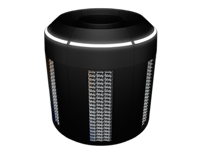

Building distributed server compute capability isn’t just about deploying cloud servers, it’s also about having compute at the edge of the networking, according to Cole Crawford, founder and CEO of Vapor IO.
Crawford first launched Vapor in 2015 with a new data center server platform called the Vapor Chamber.  Vapor makes use of the Open DCRE (Data Center Runtime Environment), which is an open-source platform for data center workload automation that the company created.
Vapor makes use of the Open DCRE (Data Center Runtime Environment), which is an open-source platform for data center workload automation that the company created.
The new Vapor Edge platform is built on top of OpenDCRE and helps to enable a distributed fabric for compute power where it’s needed, whether in the data center or at the network edge.
“We think that a new type of cloud is needed, whereas big regional data centers have been used, a new type of cloud is emerging,” Crawford told ServerWatch.
That new type of cloud is very de-centralized, where application latency determines placement of resources. Crawford explained that on top of OpenDCRE, which provides IT telemetry, Vapor has also built Vapor Core, is a commercial product used by operators to remotely monitor and administer systems.
On top of Vapor Core, Vapor has a product called Compass that is used by operators to automate and build policies and orchestration capabilities for optimizing workloads.
The new Vapor Edge platform is a combination of OpenDCRE, Vapor Core and Vapor Compass. The Vapor Edge can run on Vapor’s Chamber server or on standard x86 servers as well.
The Vapor Chamber is a unique design for a server, with the aim to increase compute capacity while providing optimal power and cooling. Crawford commented that his company is working on some new Chamber designs to be announced in the near future that can work at the bottom of a 4G/LTE radio tower.
Crawford explained that the Chamber footprint has gotten smaller since 2015. Additionally, Vapor is also working on Chamber designs that are effectively half a Chamber, or three server racks. The original Vapor Chamber has a diameter of nine feet, and it can fit six server racks and up to 150 kilowatts.
“We’re working through the various patents for that now and it will be a much smaller footprint,” Crawford said.
Sean Michael Kerner is a senior editor at ServerWatch and InternetNews.com. Follow him on Twitter @TechJournalist
Property of TechnologyAdvice. © 2025 TechnologyAdvice. All Rights Reserved
Advertiser Disclosure: Some of the products that appear on this site are from companies from which TechnologyAdvice receives compensation. This compensation may impact how and where products appear on this site including, for example, the order in which they appear. TechnologyAdvice does not include all companies or all types of products available in the marketplace.